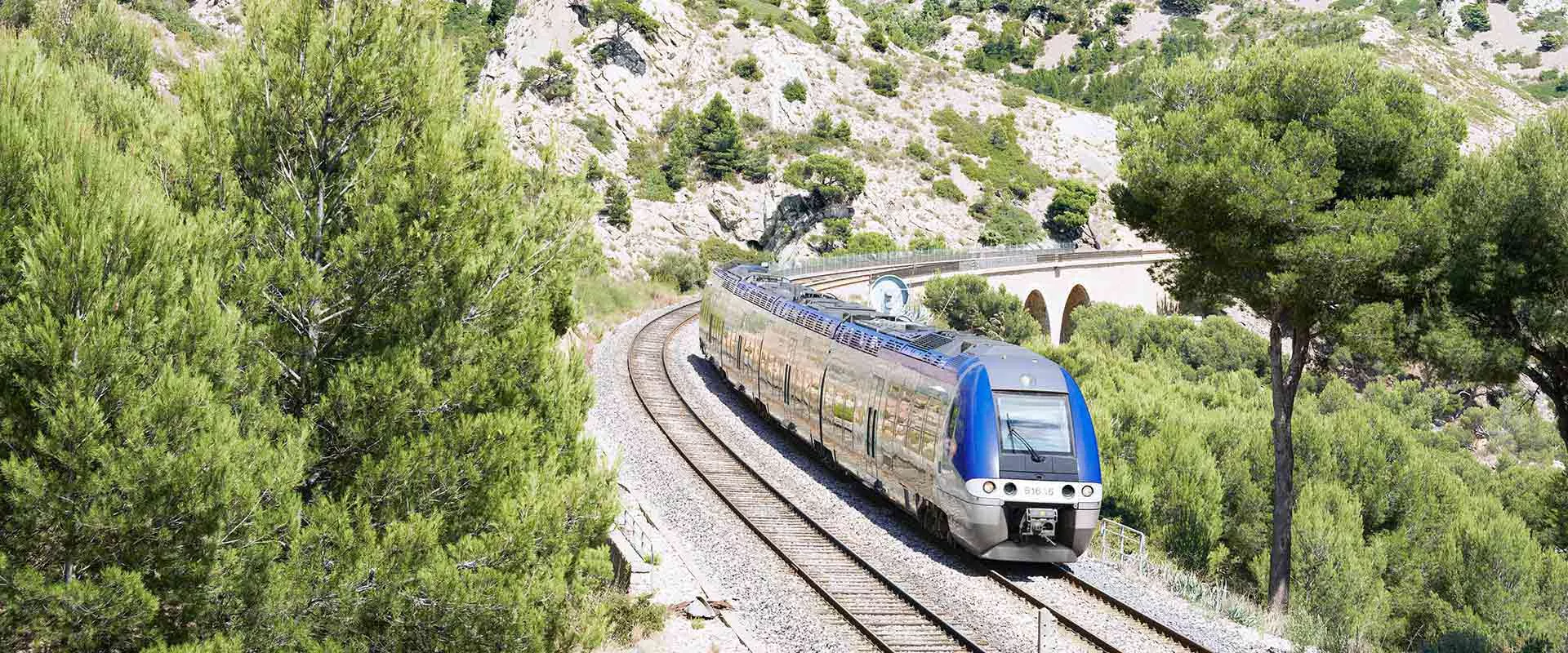
Modelling and predicting to take action
SNCF researchers use both physical and data modelling to limit the cost of designing, monitoring, maintaining and operating the French rail network.
Monitor. Predict. Act. You can’t see them, but more and more of our trains are packed with tiny sensors, collecting huge quantities of data throughout each journey. Analysing this data yields a wealth of insights. For example, we use post-processing data from wheelset acceleration to monitor track geometry and keep an eye on changing track fault kinetics. Both have tremendous value for improving routine track maintenance.
Using predictions to improve maintenance
Our researchers also develop solutions that help us better understand rail fatigue—which lets us predict when cracks will appear and how they’ll spread. They model the track’s mechanical strength against fatigue, using both physical modelling and ultrasound measurements. Our aim? Predict when cracks will appear, and schedule maintenance to prevent breakage.
Representing the rail system
“If the quality of our initial input—say, track measurements or train characteristics—is good, digital modelling can represent rail systems with high confidence,” says Nicolas Lestoille, a railway dynamics design engineer at SNCF Réseau’s Industrial and Engineering Division, and a member of our Synapses network.
Combining data...
For both track geometry and rail fatigue, our engineers combine information from data with information from mechanical simulations. “That’s what sets our team apart: we carefully select and combine physical and data-based models to optimize rail operations—surveillance, design, maintenance and certification,” says Christine Funfschilling, head of the Mechanical Systems and Interactions unit in SNCF’s Technology, Innovation and Group Projects Division.
... with mechanical simulations
With rail fatigue, for example, the physical model feeds into the data model. But sometimes the opposite is true: insights from the data model round out the physical model. And in other cases, our experts use both to keep calculation costs under control. Recently they’ve focused on cutting consumption by optimizing the speed trajectories of our trains—a task that demands expertise in both physics and mathematics.
3 questions for Christine Funfschilling
What are the benefits of your work?
Basically, our aim is to develop innovative methods that will help SNCF Group reduce the cost of certifying, monitoring, maintaining and operating our rolling stock and infrastructure. Our customers benefit when we limit the disruptions and delays that can result from defects in these processes.
How does that help design tomorrow’s trains?
The aim of rail system physics is to better understand and better simulate the extremely complex behaviour of trains in their environment. That’s a critical step towards designing and adapting trains to meet the demands of new transport systems.
What challenges do you face?
Research in this area is increasingly multidisciplinary. For example, a single project might involve mechanics, electronics, IT and data science. The biggest challenge over the next few years is to get these different fields to communicate with each other successfully and reach practical solutions for tomorrow’s problems.
Our partners
- Partners at SNCF: the Industrial & Engineering Division (DG2I) at SNCF Réseau, and the Centre for Rolling Stock Engineering (CIM) at SNCF Voyageurs
- Outside partners: EuroBios and SDTools, both start-ups
- Partners in academia: Université Gustave Eiffel, ENS Paris Saclay, Arts et Métiers Institute of Technology (ENSAM), and UCLouvain
Share the article